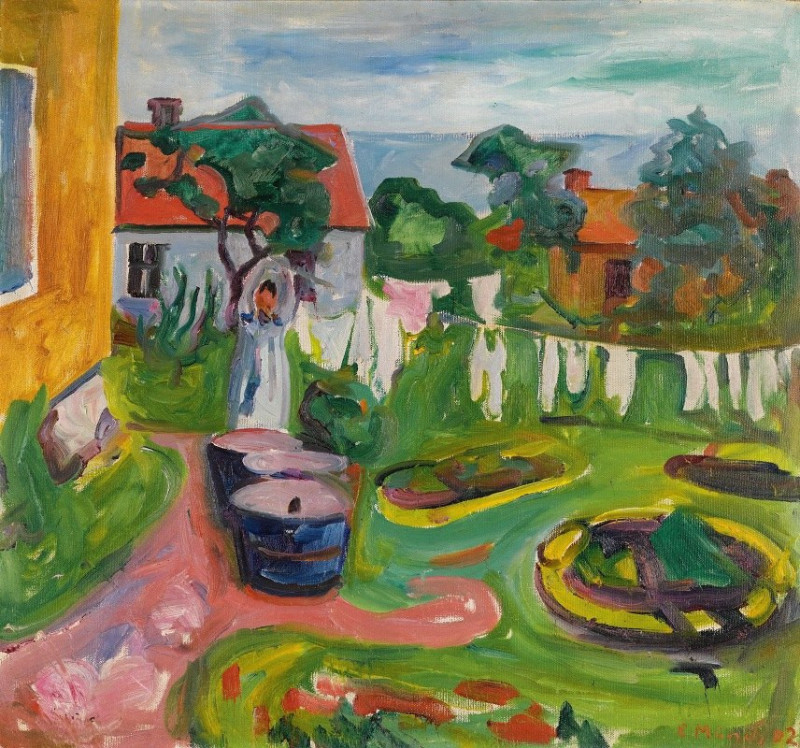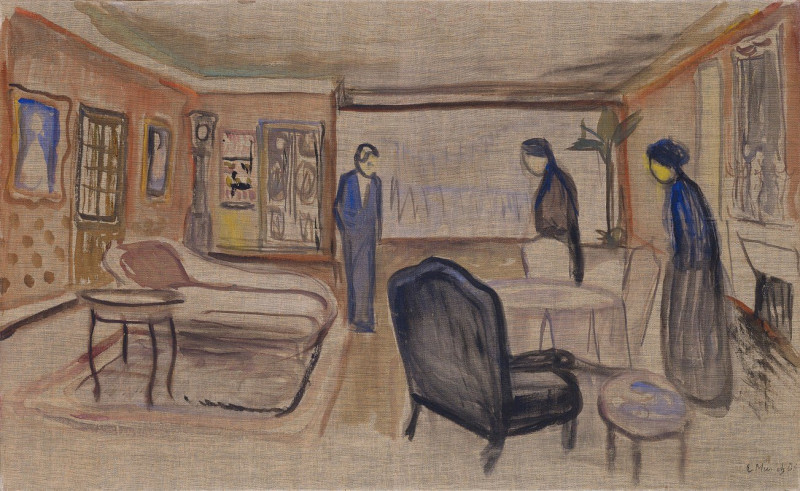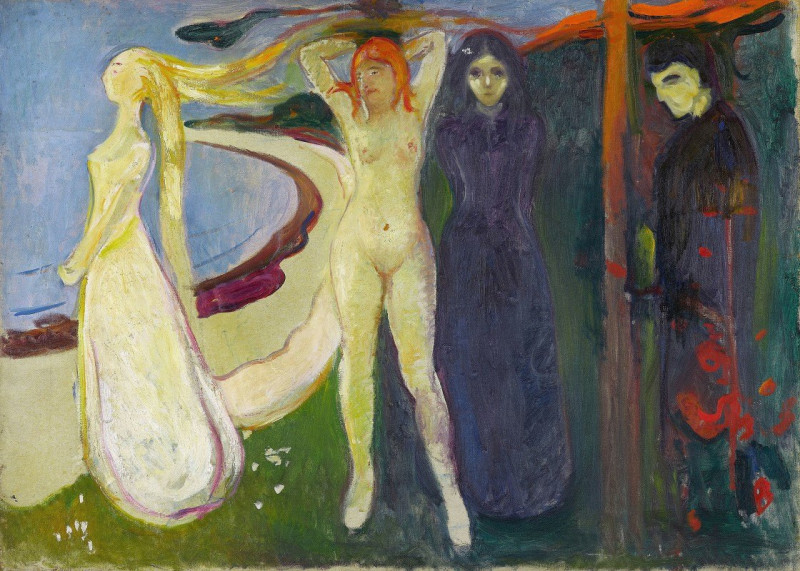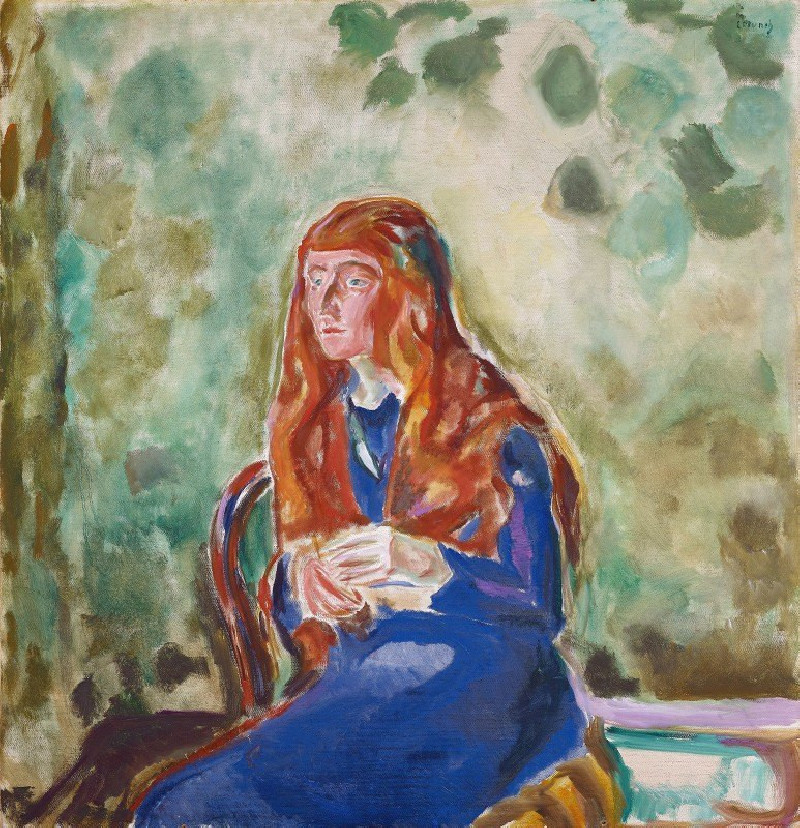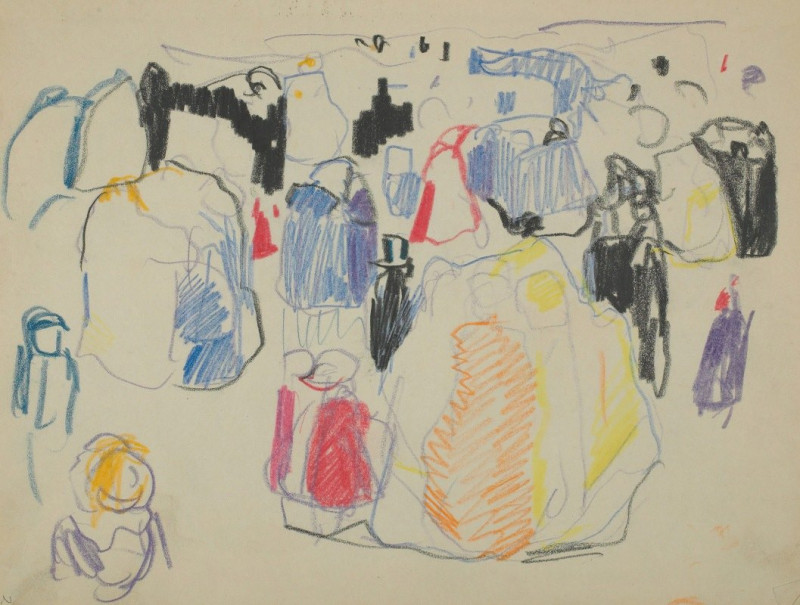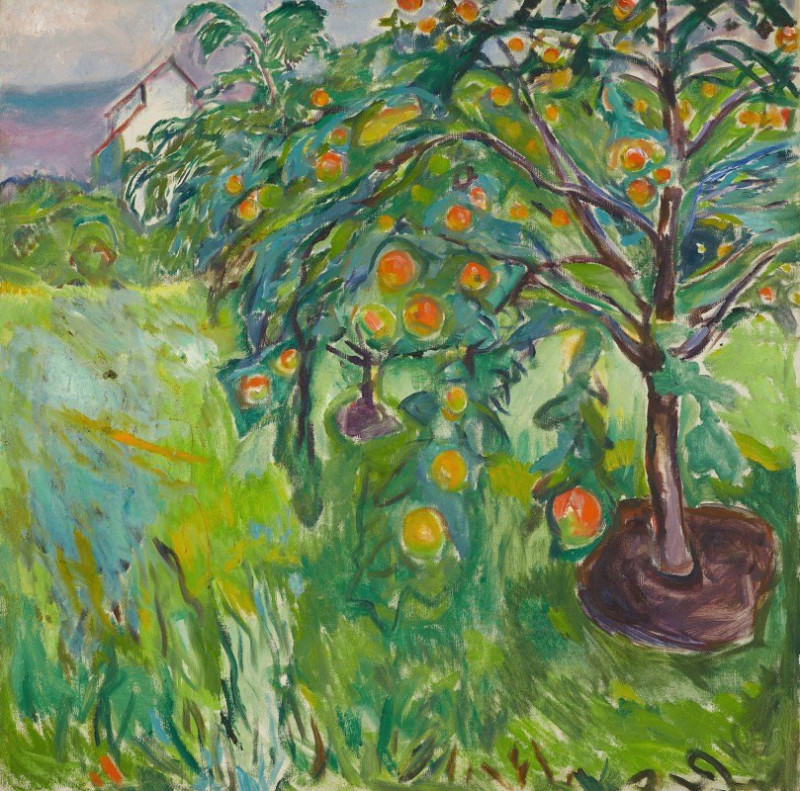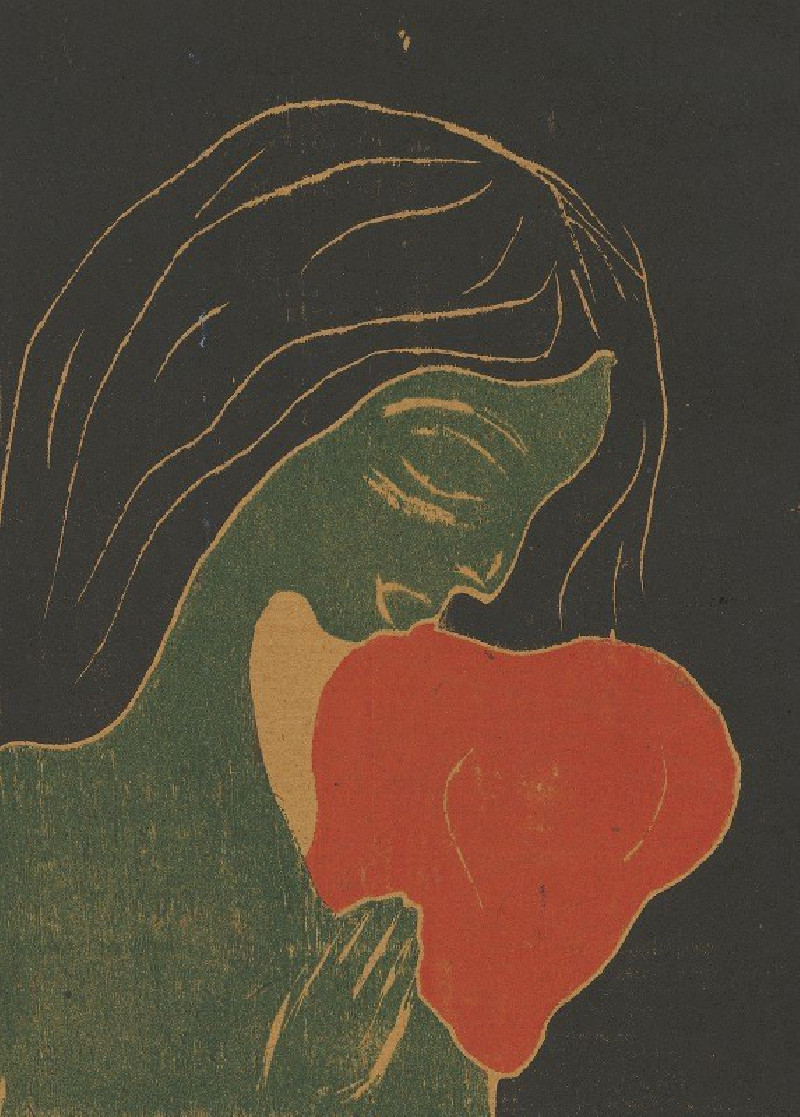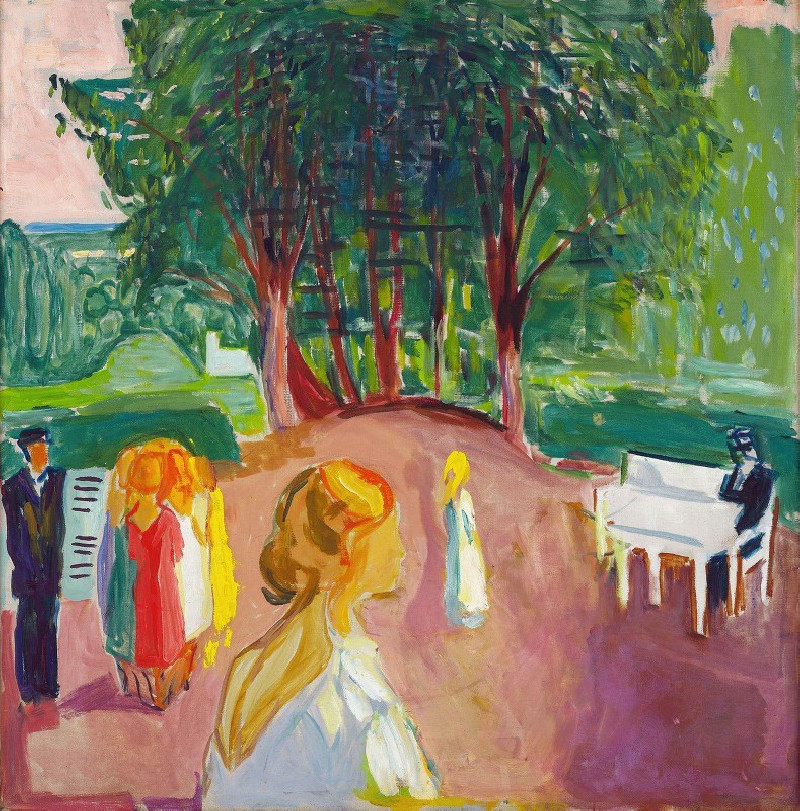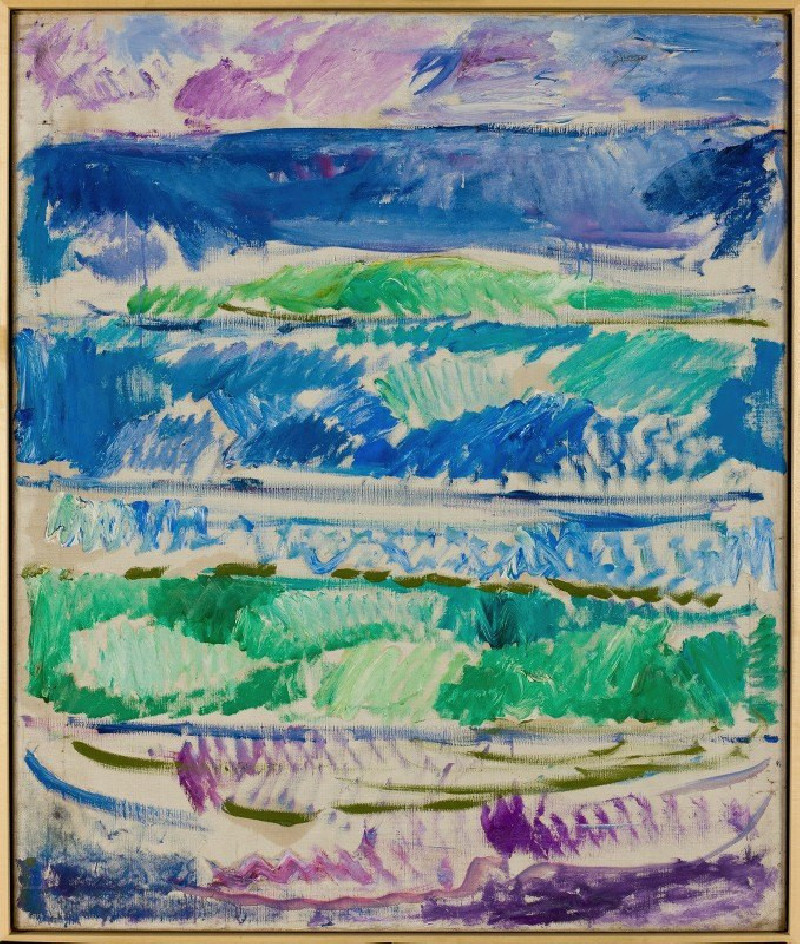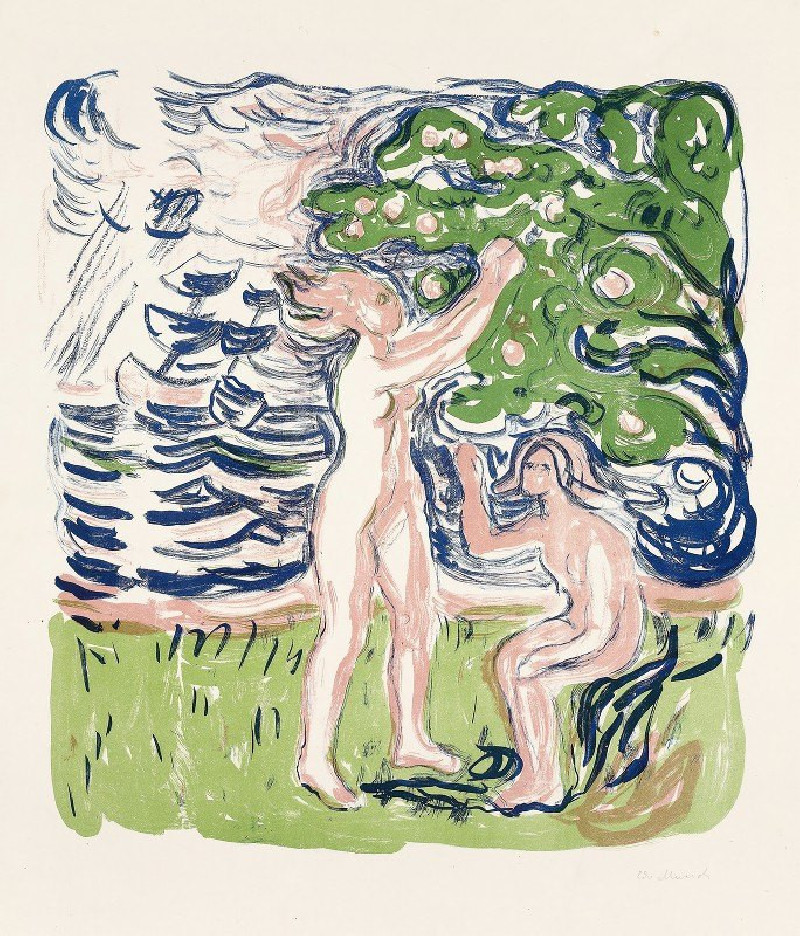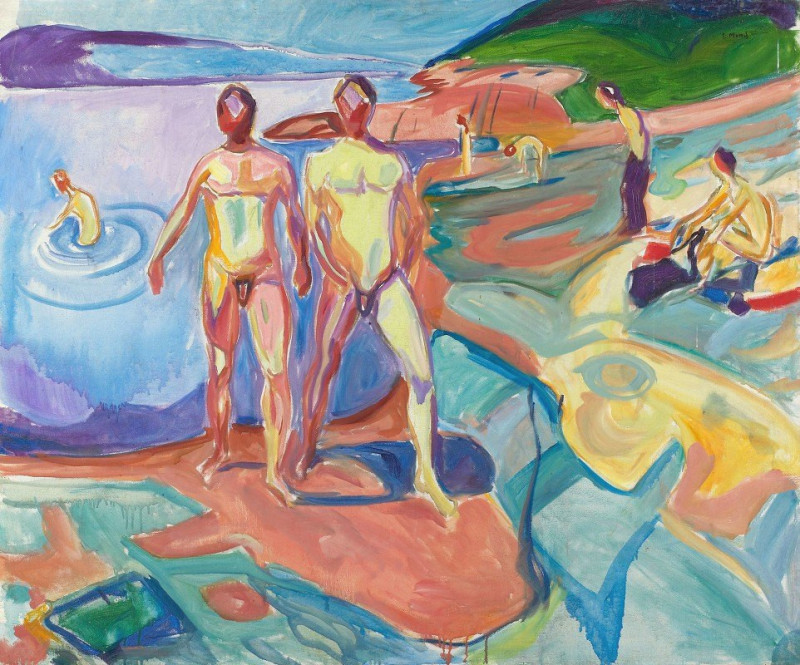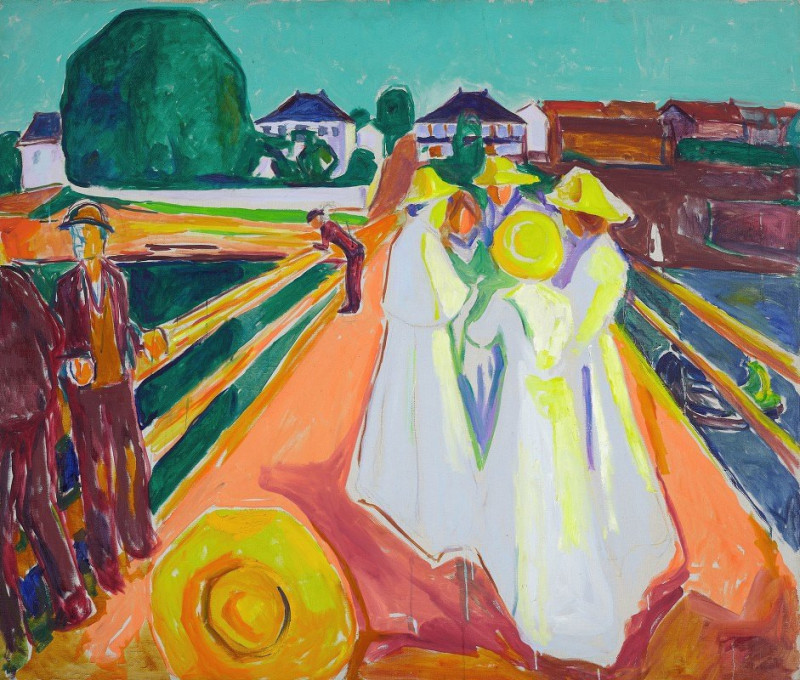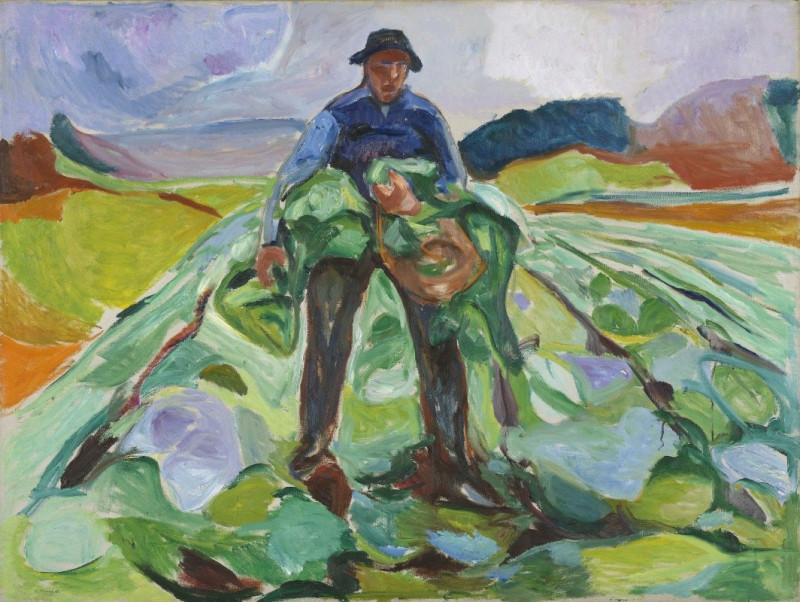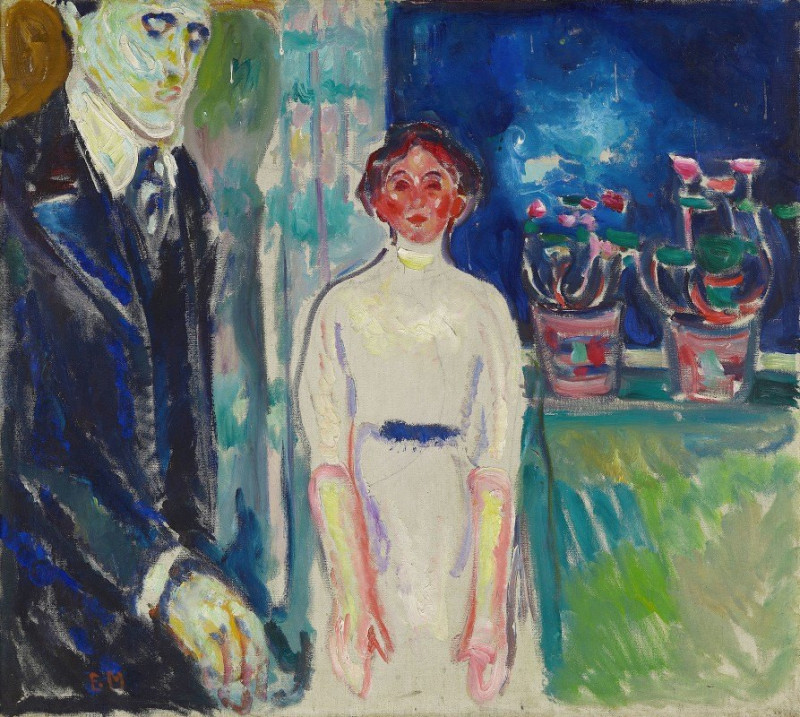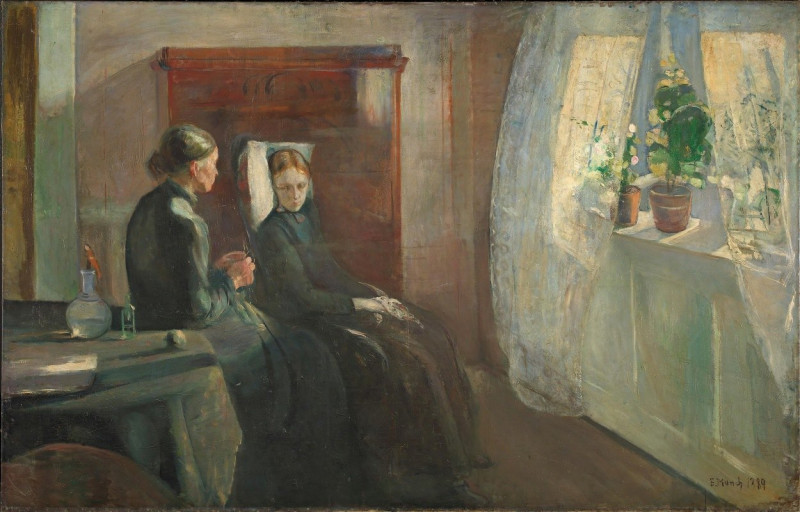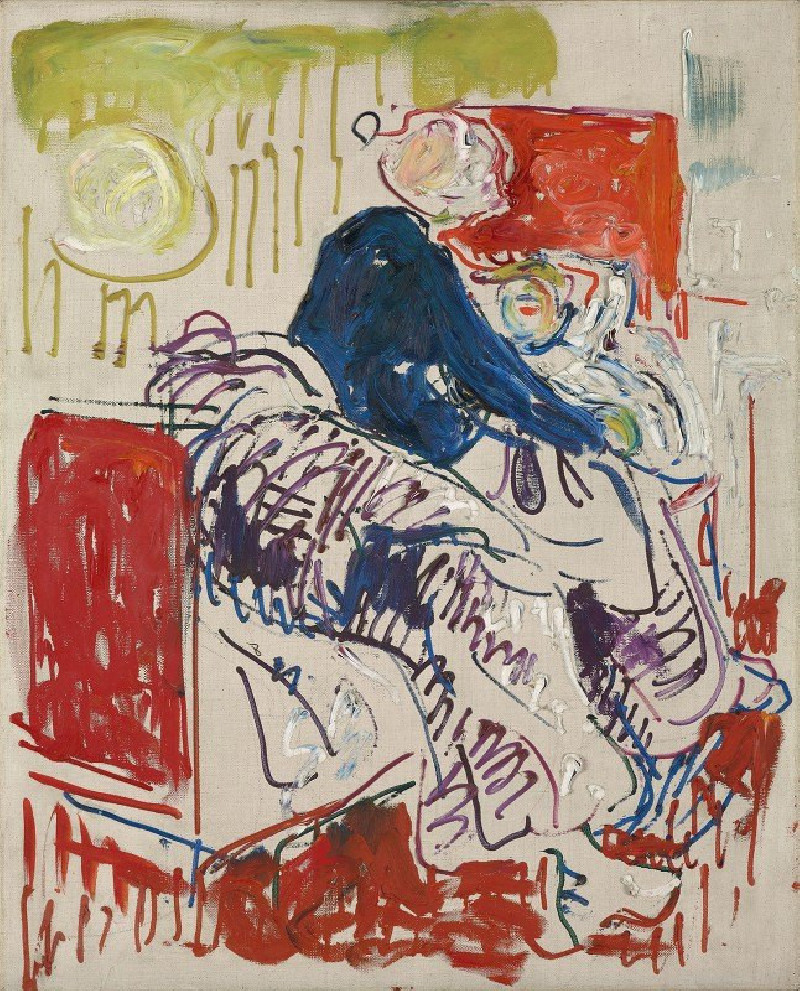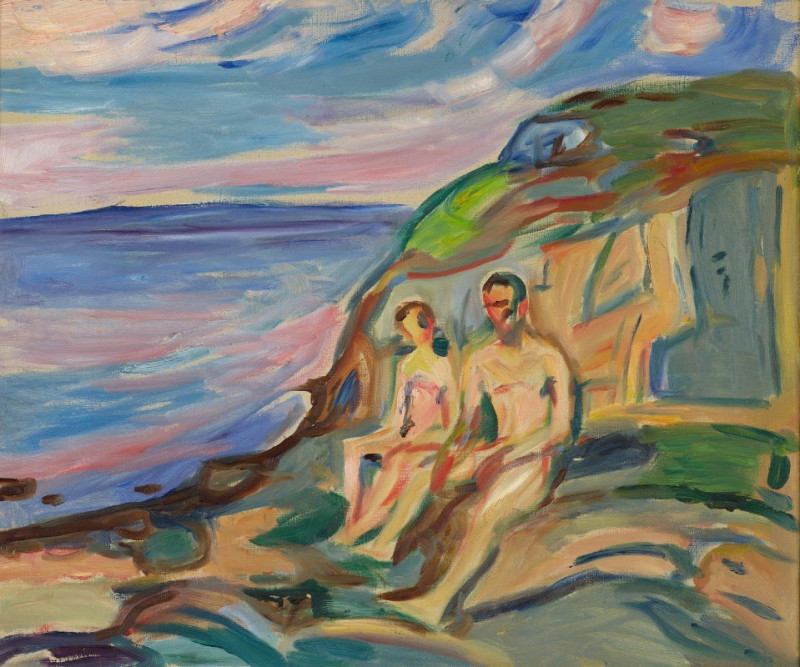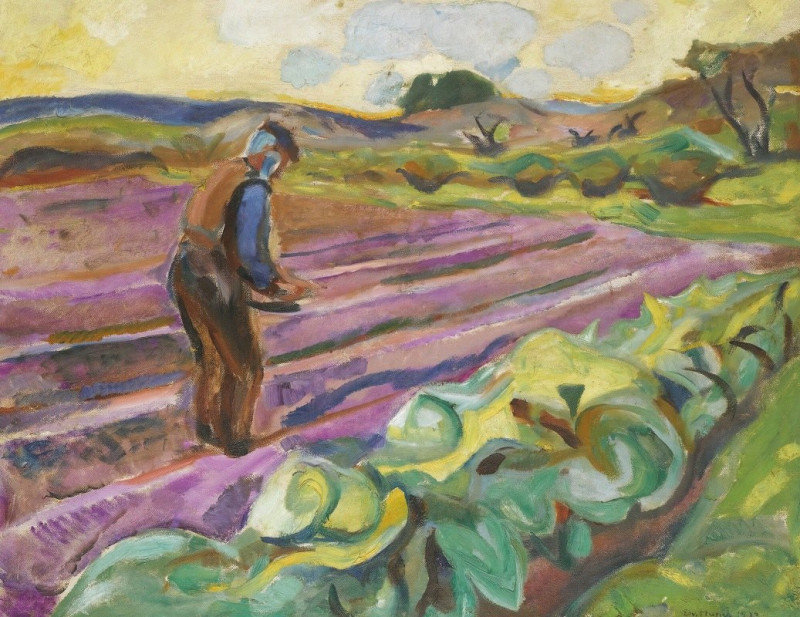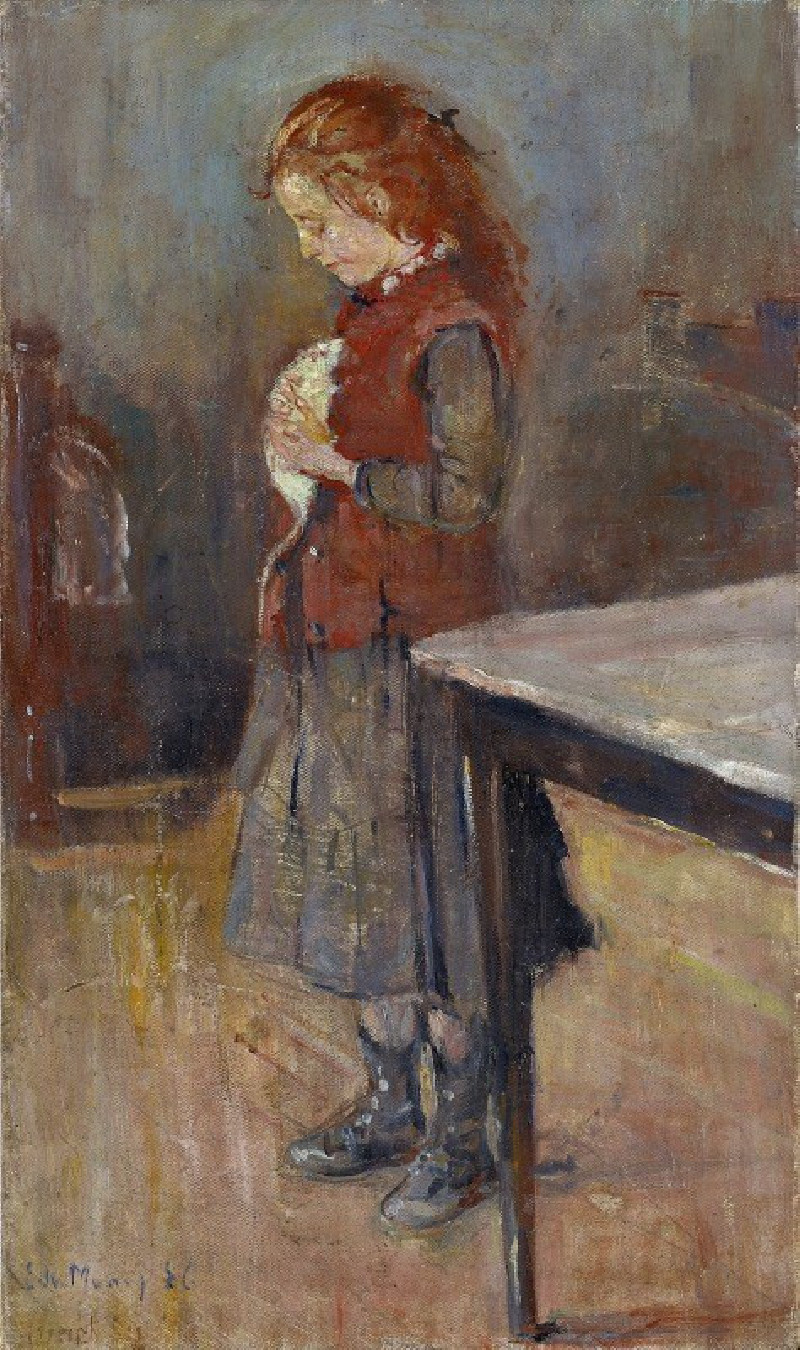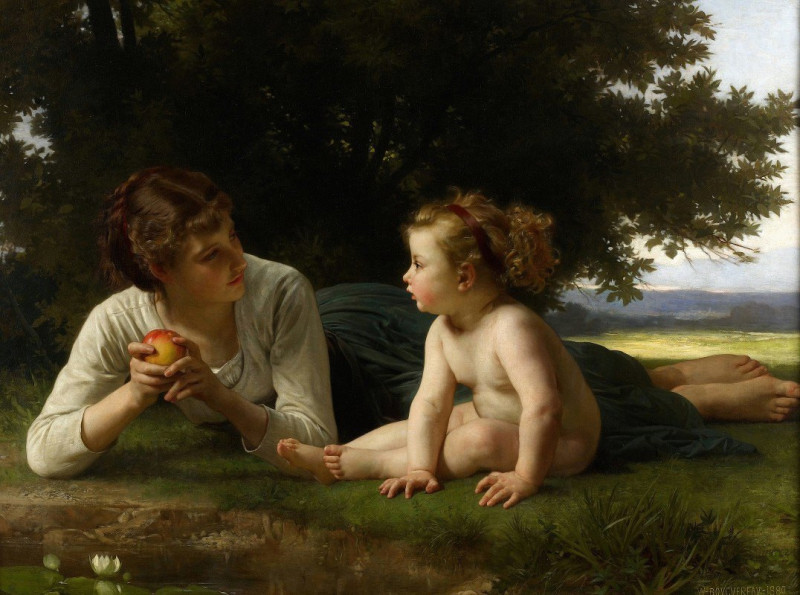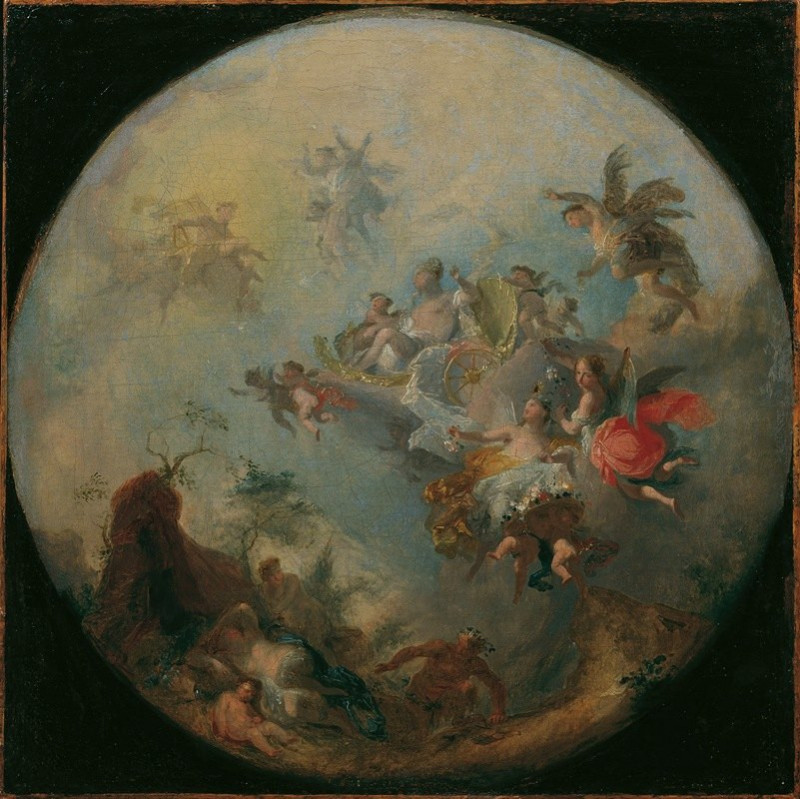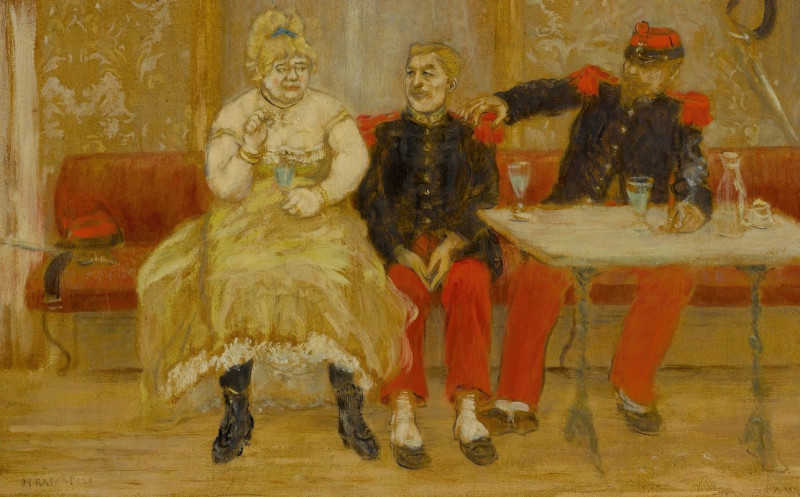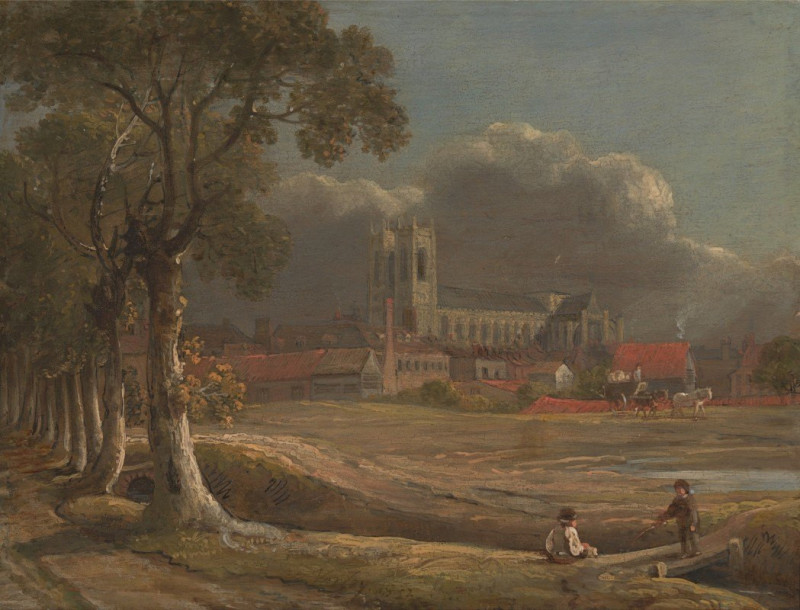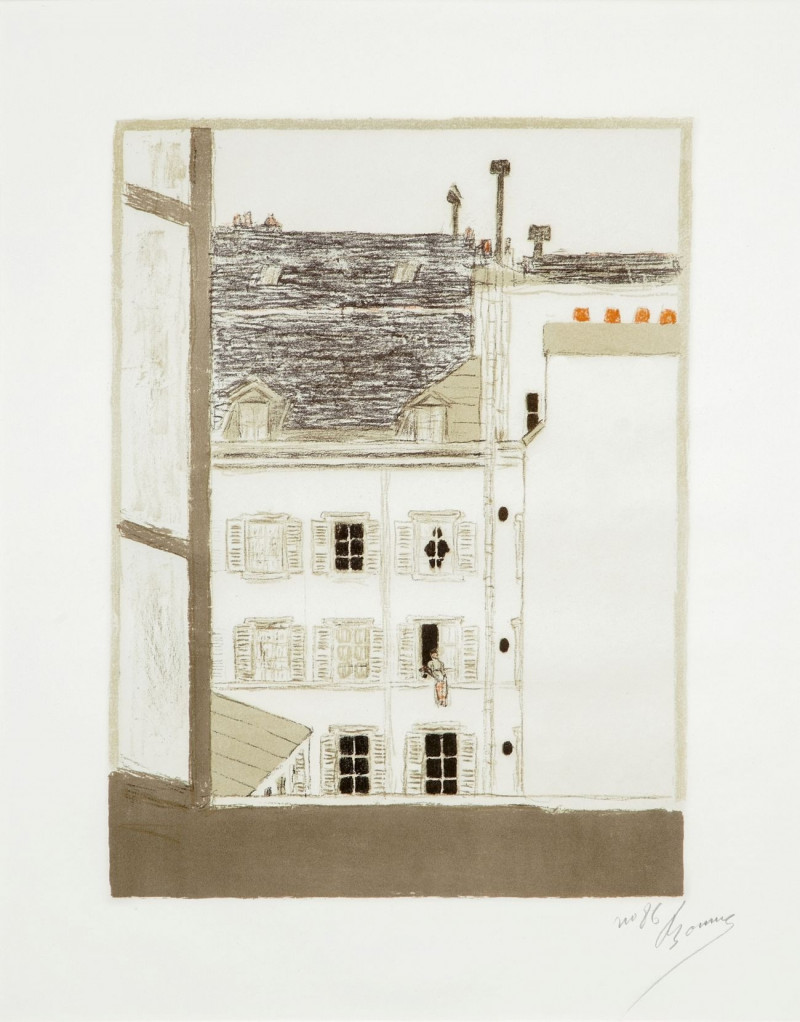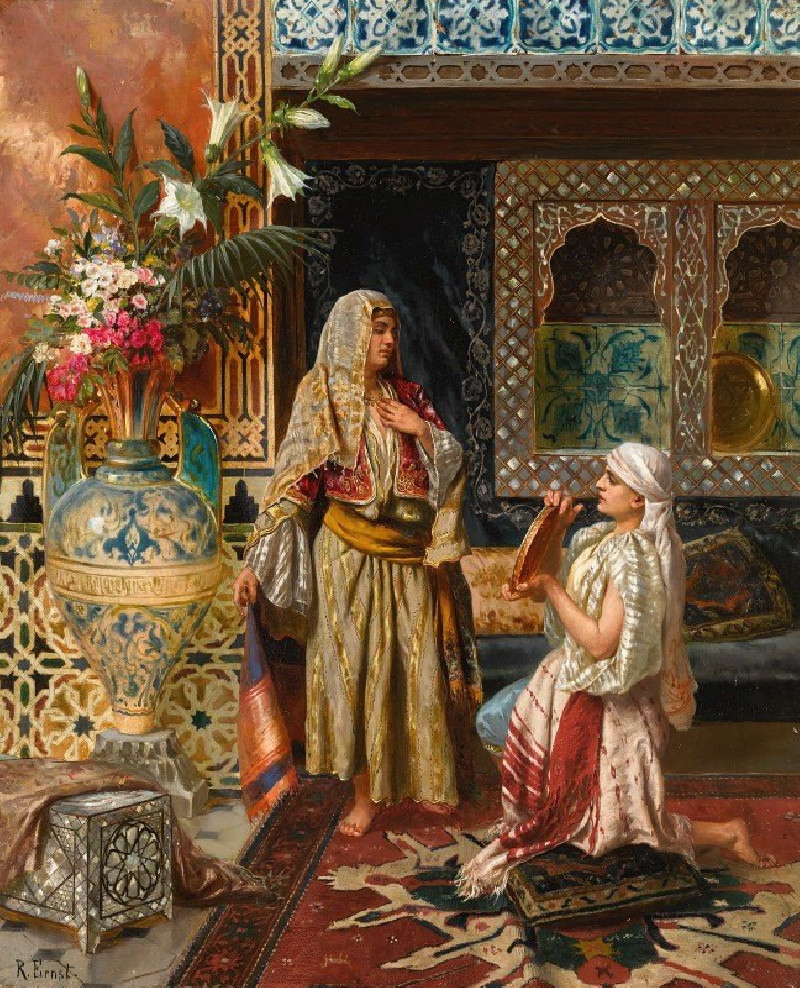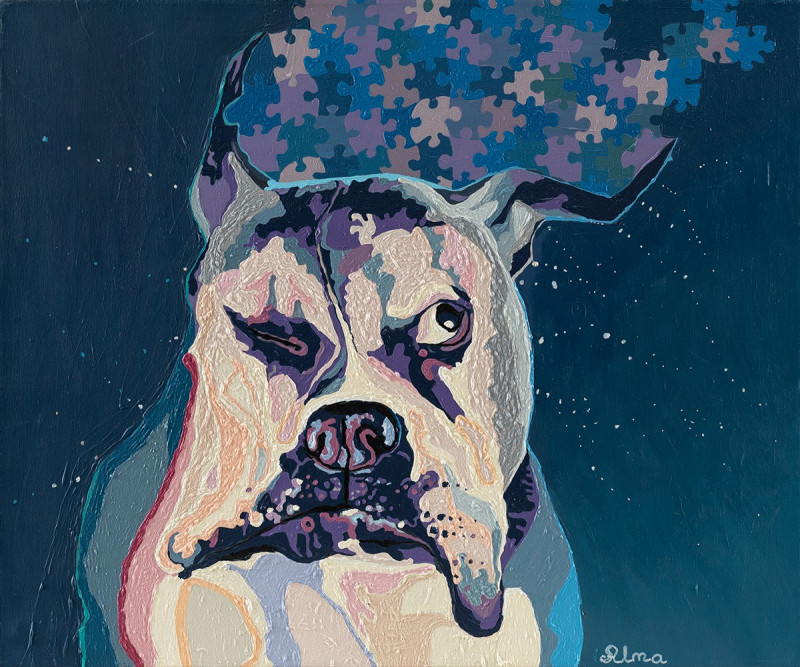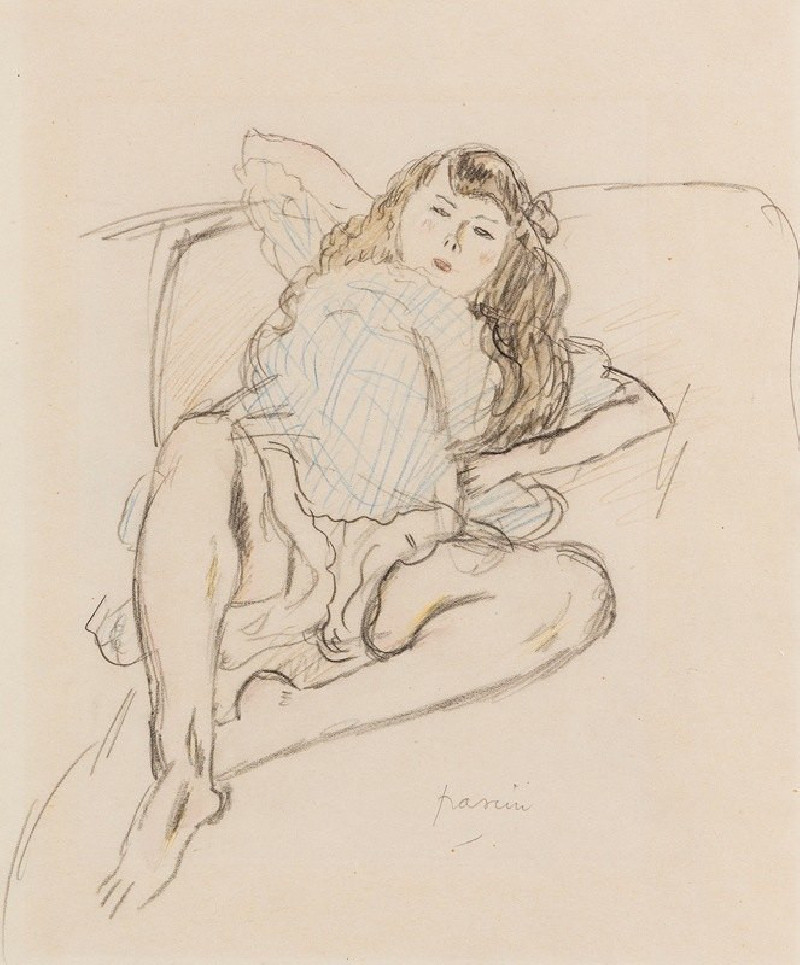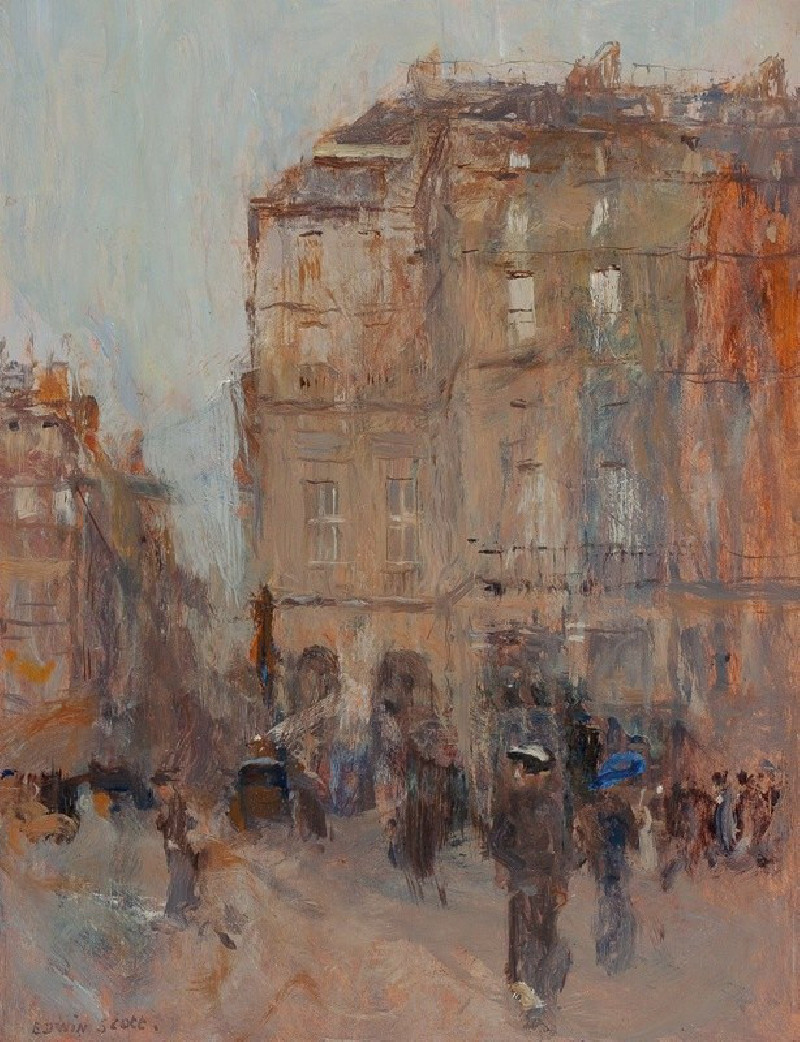The Artist and his Model (1919–21)
Technique: Giclée quality print
Recommended by our customers
More about this artwork
"The Artist and his Model" by Edvard Munch, painted between 1919 and 1921, depicts a vivid and emotionally charged scene set within an artist's studio. In the painting, two primary figures capture the viewer's attention: the model and the artist.On the left, the model is seated, her posture slightly stooped and introspective. She is dressed in a blue and white robe, colors that stand out against the warm tones of the surroundings. Her face is downcast, suggesting a moment of reflection or rest from her posing session. The use of broad, visible brushstrokes in her depiction adds a tactile quality and emphasizes the emotional depth of her figure.Opposite to her, we see the artist, standing and seemingly observing his model. His stance conveys a sense of contemplation or evaluation, typical of an artist studying his subject or his completed work. His attire and posture also suggest a casual familiarity with his environment — likely his own studio — which is often inherent in portrayals of artists in their workspaces.The background is filled with vibrant and roughly applied colors that define the studio's interior. An open window on the right side introduces a bit of the outside world, juxtaposing the intimate indoor setting.
Delivery
Returns
Edvard Munch (12 December 1863 – 23 January 1944) was a Norwegian painter. His best known work, The Scream (1893), has become one of Western art's most iconic images.
His childhood was overshadowed by illness, bereavement and the dread of inheriting a mental condition that ran in the family. Studying at the Royal School of Art and Design in Kristiania (today's Oslo), Munch began to live a bohemian life under the influence of the nihilist Hans Jæger, who urged him to paint his own emotional and psychological state ('soul painting'); from this emerged his distinctive style.



